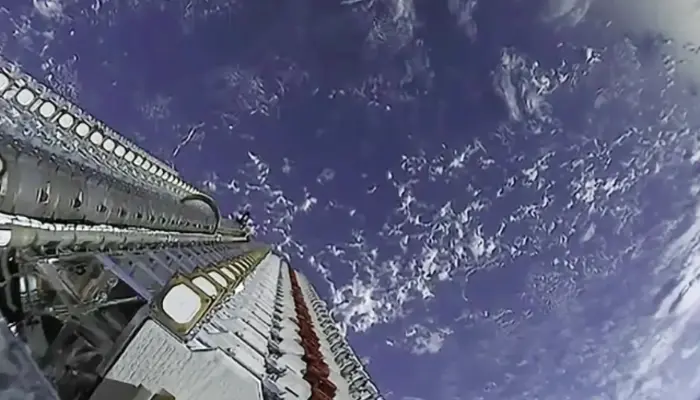Starlink Satellites Burn Up, Raising Environmental Concerns

A record 120 Starlink satellites burned up upon reentry in January 2025, creating artificial meteor showers visible across the night sky. While these streaks of light captivate observers, scientists warn of growing environmental risks. The increasing frequency of satellite decommissioning raises concerns about aluminum oxide pollution and its long-term impact on the atmosphere.
Growing Number of Satellite Reentries
Astronomer Jonathan McDowell from the Harvard Center for Astrophysics reports that four to five Starlink satellites are reentering Earth’s atmosphere daily. SpaceX is phasing out its first-generation Starlink satellites, replacing them with newer models. So far, over 500 of the original 4,700 satellites have deorbited.
As these satellites reenter at speeds of 27,000 km/h (16,800 mph), intense friction causes them to burn up, producing bright trails similar to natural meteor showers. However, this fiery destruction releases metallic particles, particularly aluminum oxide, into the atmosphere.
Read: Sam Altman Rejects Elon Musk’s $97.4 Billion Bid for OpenAI
Potential Risks to the Ozone Layer
The large-scale release of aluminum oxide has sparked concerns about its impact on the ozone layer. Studies suggest that aluminum oxide particles can linger for decades, eventually interacting with chlorine in the stratosphere and accelerating ozone depletion. In January alone, satellite burn-ups introduced significant amounts of aluminum oxide into the atmosphere, compounding the issue.
A single 250 kg (550 lb) satellite can generate 30 kg (66 lb) of aluminum oxide nanoparticles upon reentry. This buildup is alarming, as recent data shows that in 2022, Low Earth Orbit (LEO) satellite reentries released over 41.7 metric tons (46 US tons) of aluminum, exceeding the natural contribution from micrometeoroids by nearly 30%.
Projected Increase in Atmospheric Pollution
If the current rate of satellite reentries continues, aluminum oxide accumulation in the upper mesosphere could surge by 640% annually. Experts predict this could result in over 360 metric tons of aluminum oxide per year, posing a long-term environmental challenge. The particles may persist for up to 30 years before settling in the stratosphere, potentially affecting atmospheric chemistry.
Despite these risks, there are no international regulations addressing the environmental impact of satellite reentries. This lack of oversight raises concerns about the long-term consequences of growing satellite activity.
Calls for Sustainable Solutions
As satellite decommissioning accelerates, experts urge further research into mitigating its environmental effects. Some suggest that future spacecraft use biodegradable materials to reduce the long-term impact of atmospheric pollution. However, such changes would require major advancements in engineering and international regulatory policies.
With thousands of satellites expected to reenter in the coming years, the global community faces an urgent challenge: balancing technological progress with environmental responsibility.
Follow us on Google News, Instagram, YouTube, Facebook,Whats App, and TikTok for latest updates












